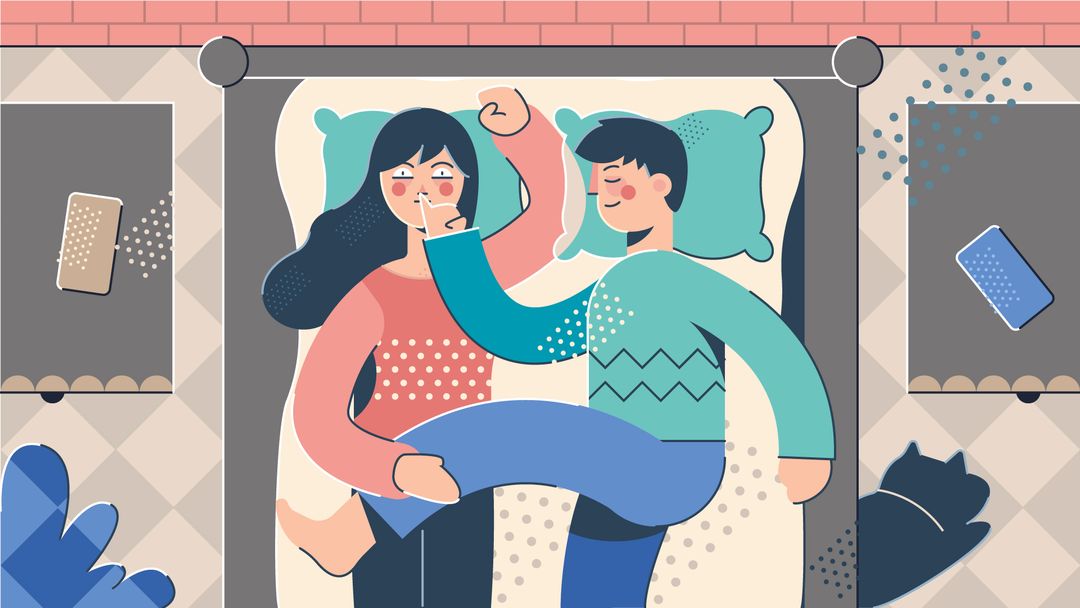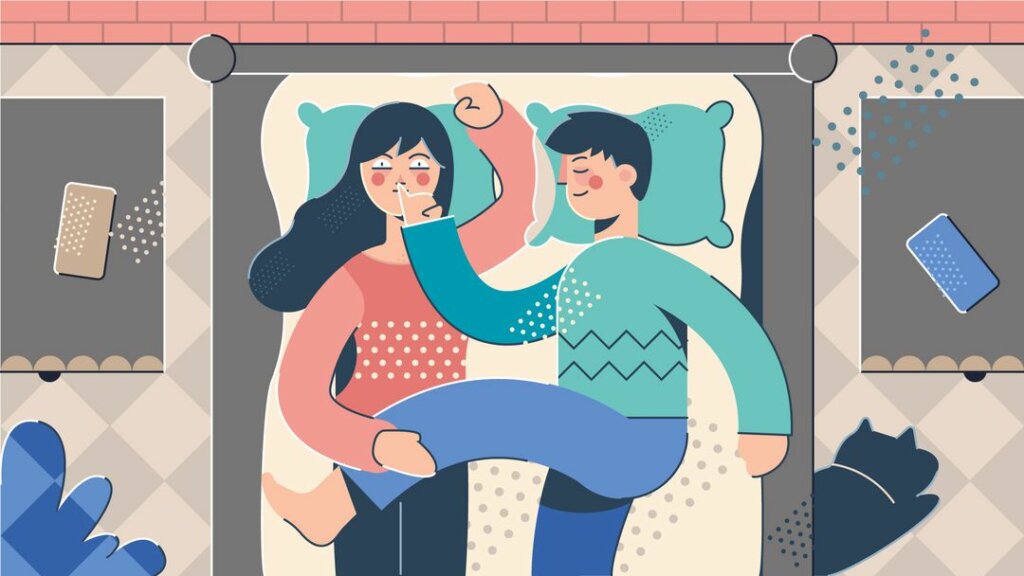Everywhere you look these days, you see inspirational messages encouraging you to aim for the stars and “live your dream!” We’re also so quick to comment on social media posts of friends who are, say, posing in a lush holiday destination, showing off their glamorous new apartment, or working as a professional puppy cuddler, how lucky they are to be “living the dream.” Now, aspiring to live our dream sounds pretty normal, but for a rare, specific group of people, actually “living the dream” can be a nightmare.
A sleep disorder called Rapid Eye Movement Sleep Behavior Disorder or RBD involves the physical enactment of a vivid dream with sounds and movements (e.g. shouting, arm flailing, talking, or punching)—as in, literally living and acting out their dreams.
Can’t sleep and don’t know why? Check out our Complete Guide to Sleep Disorders with symptoms, causes, and treatments on over twenty types of sleep disorders.
Quick Facts – Rapid Eye Movement Sleep Behavior Disorder (RBD)
Frequency: 0.5 to 1%* of the global population
Risk Factors: Parkinson’s disease, being male age 50 and above**, family history, drug use and/or withdrawal, narcolepsy
Nature: Mental
Treatment: Counseling (for alcohol or drug withdrawal), adjustments in sleep environment, medication
Symptoms – Rapid Eye Movement Sleep Behavior Disorder (RBD)
Those with RBD physically act out their dreams, which tend to be vivid and often involve running or being chased, and defending themselves from aggressors. They may not be aware of the physical movements they were making during sleep, but unlike with sleep terrors, they are able to recall the dream when they wake up.
Below are additional symptoms found among those with rapid eye movement sleep behavior disorder.
- Depression
- Changes in posture or manner of walking
- Forceful arm and leg movement during sleep (jerking, kicking, twitching, arm flailing, jumping out of bed, etc.)
- Sleepwalking
- Loud vocalizations during sleep (laughing, grunting, swearing, screaming, etc.)
- Not waking up confused or disoriented, plus the ability to recall vivid dreams
- Sexual dysfunction and constipation
Causes – Rapid Eye Movement Sleep Behavior Disorder (RBD)
Rapid eye movement sleep behavior disorder can affect both the young and old; studies however show it is most common among the elderly—especially in males age 50 and above, who also suffer from neurodegenerative conditions like Parkinson’s, multiple sclerosis, or Lewy body dementia. Below are other factors that are known to cause, or have been significantly linked to, RBD.
- Other sleep disorders – Those who have RBD usually also suffer from other sleep disorders such as obstructive sleep apnea and narcolepsy. A study has found that more than half of patients with narcolepsy also exhibited rapid eye movement sleep behavior disorder symptoms.
- Drug or alcohol use and/or withdrawal – According to research, alcohol withdrawal has been linked to the incidence of acute RBD. Use of certain antidepressants can also contribute or lead to the development of the disorder.
- Brain damage or trauma – Those who have had a stroke or a tumor also have an increased risk of chronic rapid eye movement sleep behavior disorder.
Treatment – Rapid Eye Movement Sleep Behavior Disorder (RBD)
The first step to treating RBD is typically to undergo a physical and neurological exam to determine any existing, underlying causes. Apart from that, here are a few methods that are used to treat and/or manage rapid eye movement sleep behavior disorder.
- Safety adjustments in sleep environment – Due to the physical actions (sleep talking, sleepwalking, kicking, flailing, etc.) involved in rapid eye movement sleep behavior disorder, experts recommend moving furniture, sharp objects, and all potentially dangerous items, away from the bed. This won’t eliminate the occurrence of RBD episodes, but will significantly help manage it.
- Prescription medication – Medicine used to treat anxiety, or sleep aids such as melatonin supplements, can help make RBD symptoms more manageable.
- Sleep hygiene improvement – Leading a healthy lifestyle, keeping a consistent sleep schedule, and managing stress levels can help manage the symptoms and/or reduce the risk of RBD.
How You Will Overcome Rapid Eye Movement Sleep Behavior Disorder (RBD)
Even though episodes of rapid eye movement sleep behavior disorder can be worrying and sleep-disruptive (for both the patient and their bed partner), keep in mind that RBD can be managed and treated successfully. Research shows maintaining a regular sleep schedule, avoiding alcohol and certain medications, and making bedroom safety adjustments are helpful in managing RBD episodes.
You’ll also be glad to know that according to the National Sleep Foundation, medication such as clonazepam works to eliminate or diminish RBD symptoms 90% of the time. So no, you’re not doomed to spend every night kicking, screaming, and thrashing in your sleep. You too will someday sleep soundly and get to “live your dream”—fully conscious and awake.
Did you know?
This article is part of our Complete Guide to Sleep Disorders – A resource that will help you get your quality sleep back. Click here to learn more about sleep disorders, their causes, symptoms and how to overcome them.



